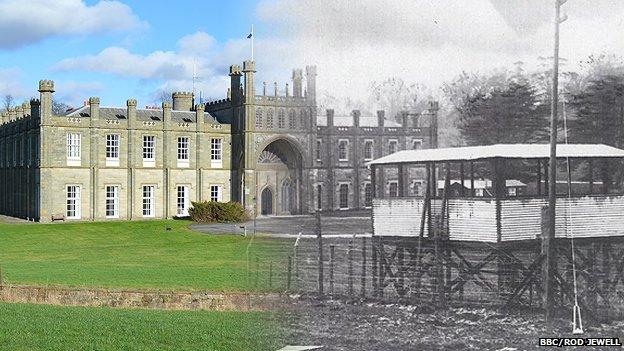Unseen photos of WW1 German POWs on display
- Published
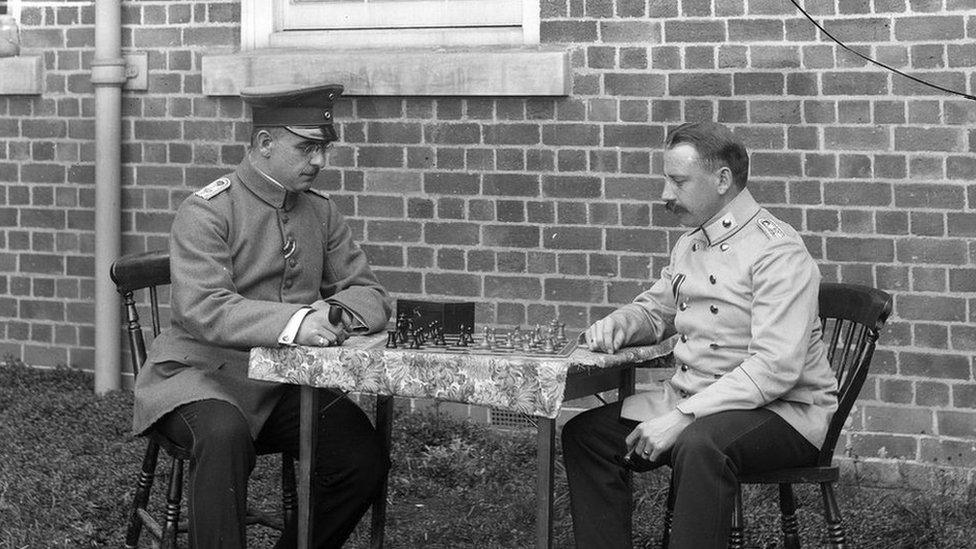
German prisoners of war played chess and lived in comfort while being held at Donington Hall
Photographs showing the extraordinary lives of German prisoners of war at a stately home have gone on display.
Donington Hall, in Leicestershire, was used to house enemy soldiers during World War One, but while others toiled in combat, the captives lived a life of comparable luxury.
The previously unseen pictures were uncovered in the archive of Derby photographers WW Winter Heritage Trust and are now the focus of a University of Nottingham research project.
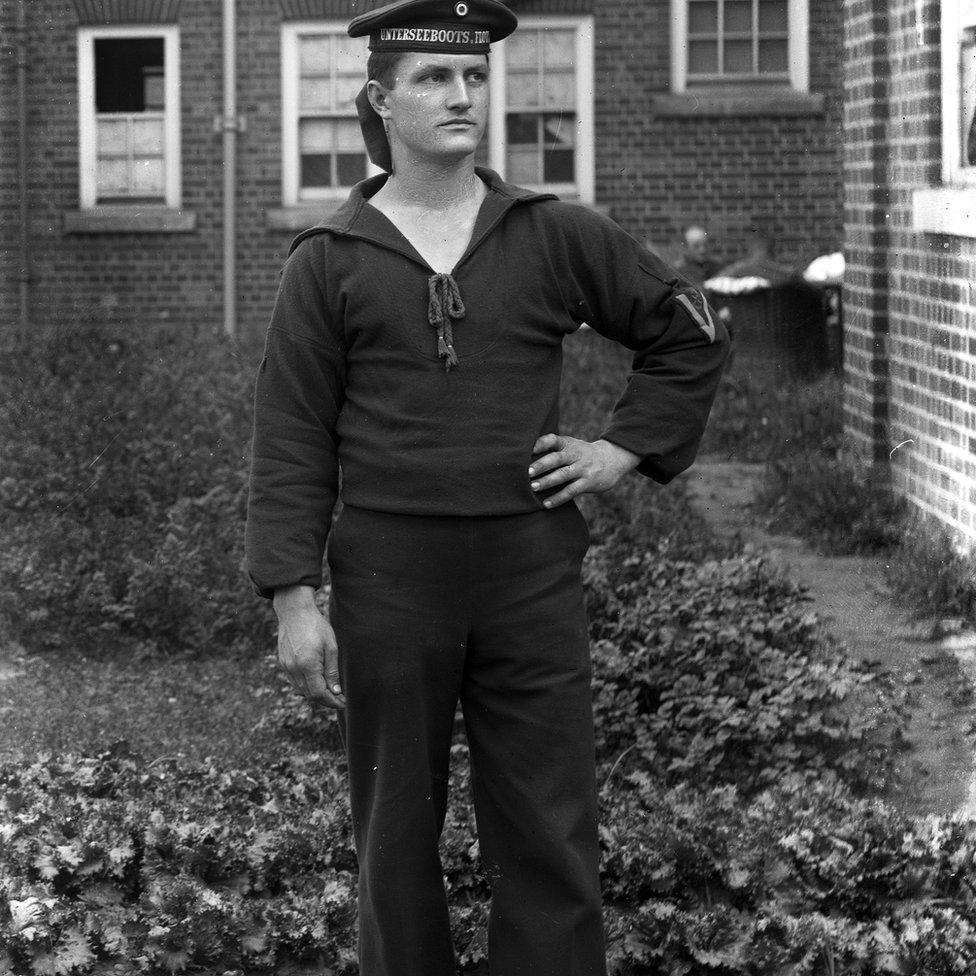
Donington Hall was turned into a detention camp during World War One
A detention camp at Donington opened in 1915 and held about 200 military and naval officers during the war, most of whom were German.
It attracted controversy due to the good conditions in which inmates lived, with a debate even being held in the House of Commons on the subject.
The camp, which also included the Midland Agricultural College at Sutton Bonington, was decommissioned in 1919 and the prisoners were repatriated to their home countries.
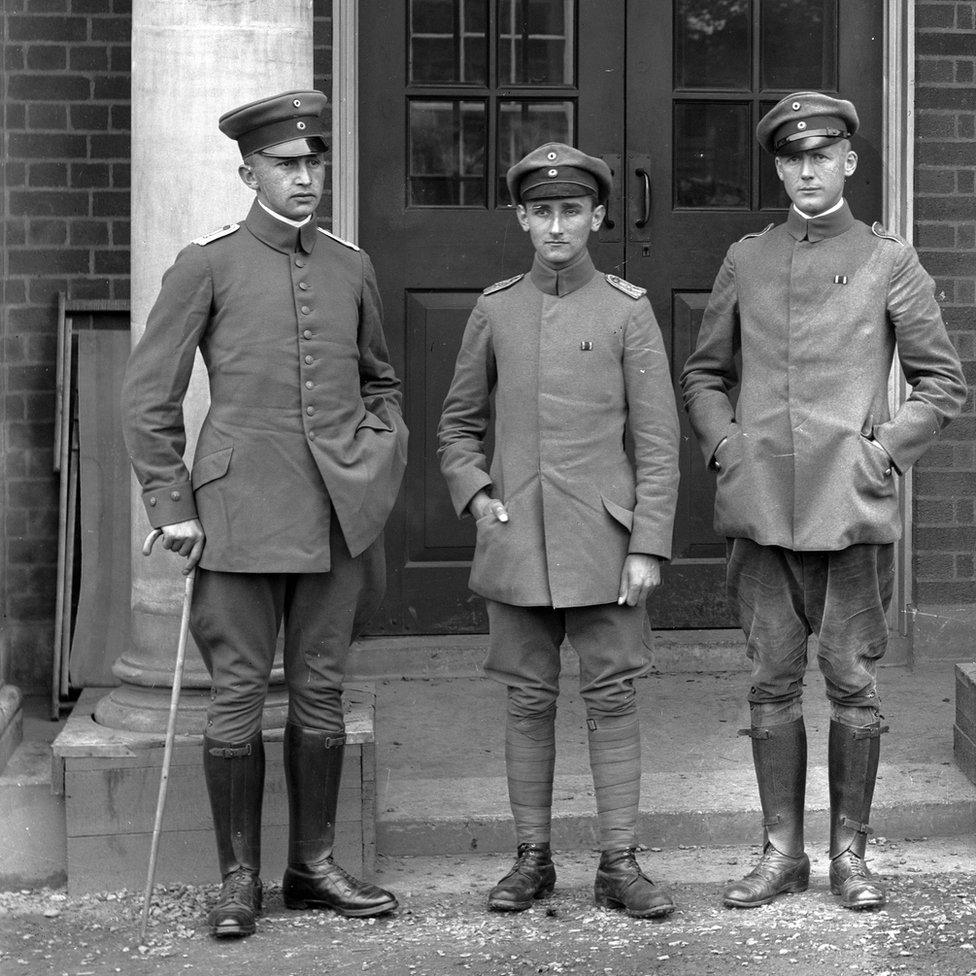
There was controversy when media attention was drawn to the conditions at Donington Hall
Jane Middleton-Smith, from WW Winter Heritage Trust, discovered the images - taken by the company's own photographers in about 1917 - after finding a collection of plate-glass negatives in their archives.
She said the 54 photographs "have unlocked a story that has been hidden for a century".
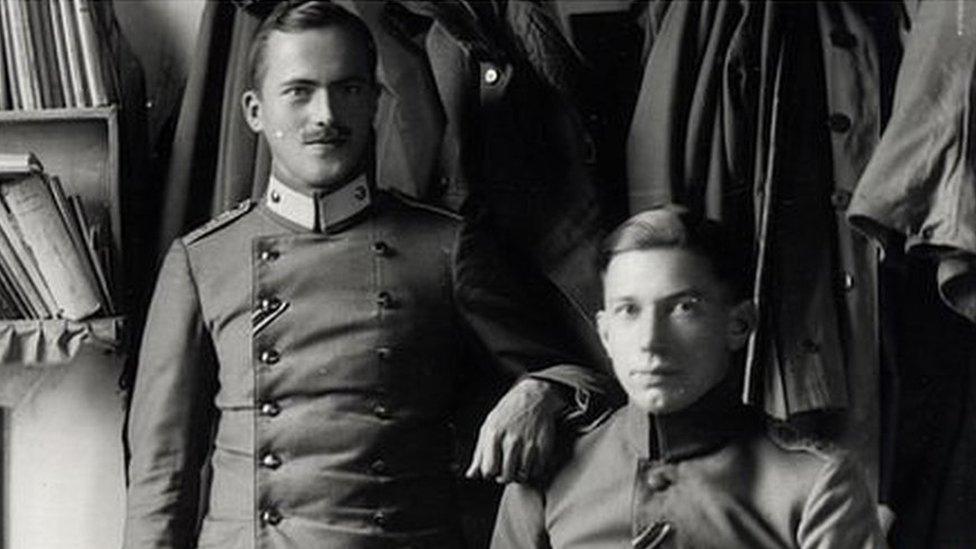
Rooms were basic but comfortable and men looked immaculately tailored
Mike Noble, from the University of Nottingham's history department, said the exhibition shows what life during World War One was like away from the trenches.
"A great deal of the territory of the UK was used for military purposes," he said.
"It is striking to see familiar buildings, Sutton Bonington and Donington Hall, with populations of uniformed German personnel."
The exhibition is on display at the University of Derby until 3 January.

Follow BBC East Midlands on Facebook, external, Twitter, external, or Instagram, external. Send your story ideas to eastmidsnews@bbc.co.uk, external.
- Published21 October 2019
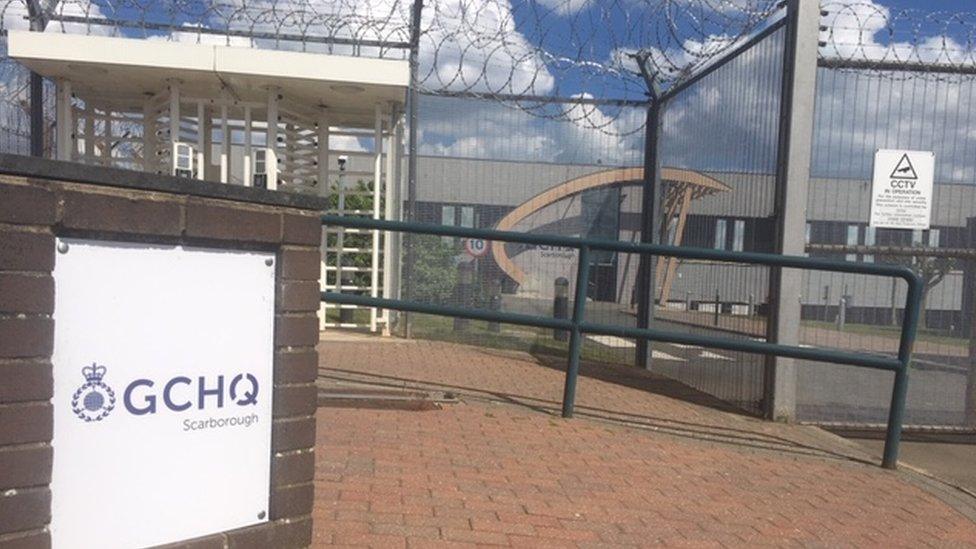
- Published26 April 2019
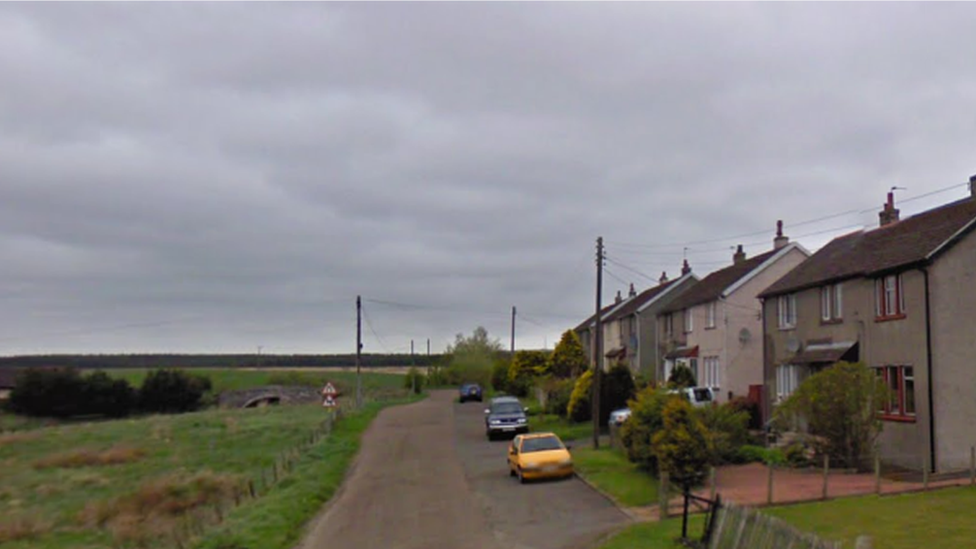
- Published25 November 2018

- Published24 February 2014
